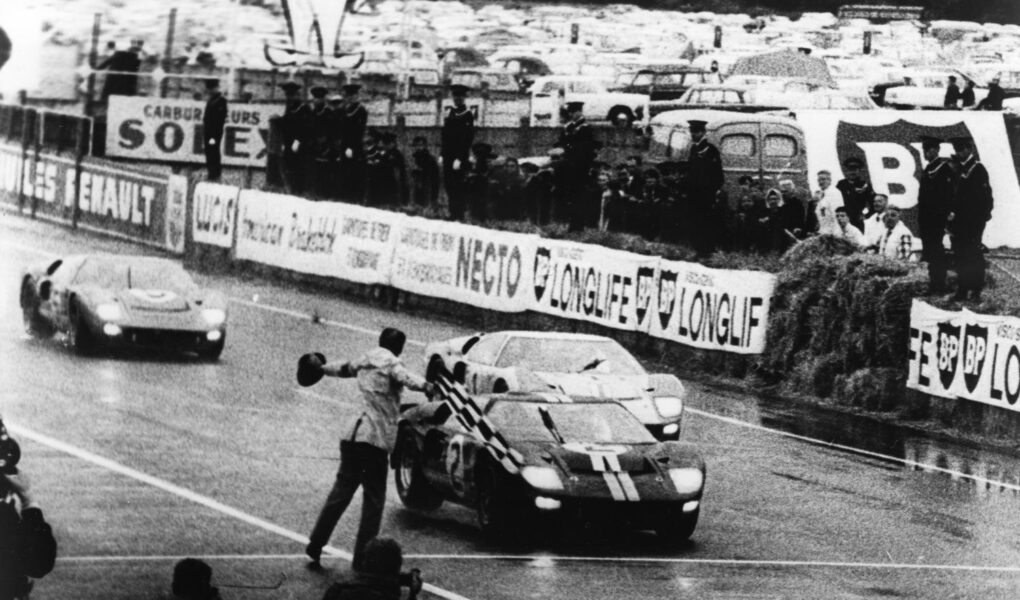The year 1966 marked a pivotal moment in automotive history, where the roar of engines and the thrill of speed reached a crescendo at the 24 Hours of Le Mans. As the sun cast its golden rays over the iconic Circuit de la Sarthe, a fierce battle ensued among racing giants, each vying for glory in one of the most grueling tests of endurance in the world. This legendary event, steeped in tradition, not only showcased the remarkable ingenuity of engineering but also captured the imaginations of fans and competitors alike. From the stunning performance of the Ford GT40 to the relentless determination of Ferrari, 1966 became a defining chapter in the annals of motorsport, forever changing the landscape of endurance racing. Join us as we delve into the exhilarating stories, groundbreaking innovations, and the indomitable spirit that characterized this unforgettable year at Le Mans.
Table of Contents
- The Enduring Legacy of the 1966 Le Mans Race
- Technological Innovations that Shaped Endurance Racing
- Behind the Scenes: The Strategies of Winning Teams
- Lessons from 1966 for Modern Motorsport Enthusiasts
- Q&A
- Insights and Conclusions
The Enduring Legacy of the 1966 Le Mans Race
The 1966 Le Mans race stands as a watershed moment in motorsport history, not just for the intensity of the competition but for its broader cultural impact. It was the culmination of a fierce rivalry between Ford and Ferrari, with Ford determined to break Ferrari’s dominance in endurance racing. The race is often remembered for the incredible spectacle that unfolded, including the iconic 1-2-3 finish for Ford, which underscored their technological prowess and fierce determination. The story is stitched together with remarkable feats of engineering, meticulous teamwork, and the brave efforts of drivers like Bruce McLaren and Ken Miles, who pushed the boundaries of speed and endurance.
This historic race also left a lasting legacy that rippled through the automotive industry and popular culture. It inspired countless films, documentaries, and books, allowing a new generation to discover the thrilling world of motorsport. Beyond entertainment, the 1966 event catalyzed innovations in automotive engineering, promoting advancements that are still influential today. Many manufacturers continue to draw inspiration from the era’s spirit of competition and ingenuity. The resonance of that classic race creates an enduring narrative of ambition and perseverance, reminding us why we celebrate motorsport in the first place.
Technological Innovations that Shaped Endurance Racing
The 1966 Le Mans race was not just a competition of speed; it was a crucible for groundbreaking technological advancements that would redefine endurance racing. One of the most notable innovations was Ford’s introduction of the GT40, a car engineered with a focus on aerodynamics and power. The GT40’s sleek design, which included a low profile and improved cooling systems, allowed it to cut through the air with minimal resistance while maintaining optimum engine performance. The race also showcased advancements in tire technology, with companies like Goodyear and Michelin innovating high-performance tires that could withstand the grueling conditions of a 24-hour race.
Another significant milestone from this era was the adoption of advanced materials and construction techniques. The use of lightweight aluminum and composite materials in race car development not only enhanced speed but also improved handling and durability under extreme stress. Key innovations included:
- Fuel injection systems that maximized efficiency.
- Improved suspension designs for better traction.
- Enhanced telemetry systems for real-time performance monitoring.
Through these advancements, the 1966 Le Mans race not only highlighted the technical capabilities of the manufacturers involved but also set the stage for future developments in the world of motorsport.
Behind the Scenes: The Strategies of Winning Teams
The 1966 Le Mans race was not just another event; it was a high-stakes battleground where engineering brilliance, strategic foresight, and a touch of audacity collided. Winning teams understood the importance of collaboration and meticulous planning, often dissecting their opponents’ weaknesses and leveraging their own strengths. Key strategies included:
- Data Analytics: Utilizing telemetry to gather real-time data and adjust tactics mid-race.
- Team Coordination: Seamless communication among drivers and pit crews, ensuring swift responses to any situation.
- Endurance Testing: Rigorous assessments of both car performance and driver stamina to withstand the grueling hours.
Furthermore, the winning teams at Le Mans were distinguished by their ability to integrate technology wisely. They balanced power with sustainability, focusing on not just speed but also reliability over the 24-hour challenge. The legendary Ford GT40, for instance, showcased this approach through its innovative design features, which included:
| Feature | Description |
|---|---|
| Aerodynamics | Sleek body shape to minimize drag and enhance speed. |
| Lightweight Materials | Use of aluminum and fiberglass for reduced weight. |
| Tire Technology | Specialized racing tires designed for optimal grip. |
Lessons from 1966 for Modern Motorsport Enthusiasts
As we reflect on the monumental events of 1966, particularly the epic showdown at Le Mans, modern motorsport enthusiasts can glean invaluable insights applicable to today’s racing landscape. The intense rivalry between Ford and Ferrari not only exemplified fierce competition but also highlighted the importance of strategic innovation. Team coordination, technical advancements, and performance optimization were pivotal in Ford’s triumphant challenge against the Italian giants. Such elements remain crucial in contemporary motorsport, where every millisecond counts and the synergy between driver and machine can dictate the outcome.
The lessons learned extend beyond the track, influencing how teams operate in the modern era. Key takeaways from that storied race include:
- The power of teamwork: Successful racing is a collective effort, requiring seamless communication and collaboration among engineers, drivers, and support staff.
- Embracing innovation: The shift towards efficient fuel performance and aerodynamic enhancements in 1966 serves as a precursor to today’s technological breakthroughs.
- Understanding the competition: Comprehensive knowledge of rival strategies can inform tactical decisions during races.
To provide a clearer picture of the significance of the 1966 race, consider the following table showcasing the top three involved manufacturers and their key attributes:
| Manufacturer | Winning Strategy | Key Innovation |
|---|---|---|
| Ford | Team Strategy and Coordination | High-Performance V8 Engine |
| Ferrari | Loyalty to Tradition | Lightweight Materials |
| Porsche | Adaptable Tactics | Aerodynamic Design |
Q&A
Q&A: The 1966 Le Mans – An Enduring Legend in Auto Racing
Q: What made the 1966 Le Mans race a significant event in automotive history?
A: The 1966 Le Mans race stands as a pivotal moment in automotive history for several reasons. It marked a fierce showdown between Ford and Ferrari, embodying the spirit of competition that shaped the endurance racing landscape. Ford’s victory not only highlighted its engineering prowess but also represented a culmination of years of investment in motorsports, specifically to defeat Ferrari, who had dominated the previous years. The race is remembered for its incredible drama and tension, showcasing not just speed but also strategy and endurance.
Q: What were some of the most memorable moments from the 1966 race?
A: Several moments from the 1966 race have gained legendary status. One of the most iconic scenes involved the finish: all three Ford Mk II cars crossed the line nearly simultaneously, creating a dramatic finish that underscored the intense competition. Additionally, the tactical decisions made by team leaders—especially the controversial decision to order the cars to slow down for a photo finish—added layers of intrigue to the already electrifying race. This race not only showcased raw speed but also encapsulated the tactical depth of endurance racing.
Q: Who were the notable drivers participating in the 1966 Le Mans?
A: The 1966 Le Mans featured a mix of legendary drivers who contributed to its storied legacy. Notable participants included Bruce McLaren and Chris Amon, who drove one of the victorious Ford Mk II cars. Other significant drivers included Scott Dixon and Mario Andretti, who brought their vast experience and skill to the racetrack. The presence of such esteemed names added an additional layer of prestige to the event, further amplifying its importance in the racing world.
Q: How did the outcome of the 1966 race affect the rivalry between Ford and Ferrari?
A: The outcome of the 1966 race dramatically shifted the dynamics of the rivalry between Ford and Ferrari. Ford’s impressive 1-2-3 finish not only marked a personal triumph against Ferrari but also initiated a new era in auto racing, where American manufacturers began to gain prominence in international motorsports. This defeat was a blow to Ferrari’s pride and legacy, prompting modifications in their racing strategy. While Ferrari would continue to compete fiercely in subsequent years, the 1966 race solidified Ford’s place in racing history and ignited a fierce competitive spirit that would characterize motorsports for years to come.
Q: Why does the 1966 Le Mans continue to resonate with car enthusiasts today?
A: The 1966 Le Mans resonates deeply with car enthusiasts due to its rich blend of competition, strategy, and technological innovation. The narrative of Ford vs. Ferrari, emerging from corporate rivalry and passion for engineering, captivates audiences beyond just racing fanatics—it represents a classic tale of underdog determination and triumph. Additionally, the race has been immortalized in films and documentaries, further embedding it into popular culture. Its legacy lives on as a symbol of the relentless pursuit of excellence in motorsports, making it a timeless story for generations of racing aficionados.
Q: What changes in regulations or technologies emerged after the 1966 race?
A: Post-1966, the world of endurance racing experienced several shifts both in regulations and technology. While the endurance races continued to attract innovative engineering, concerns over safety began to influence race regulations. This led to increased scrutiny regarding the speeds and performance of race cars, as well as tighter safety measures for drivers. Moreover, the 1966 race spurred technological advances, with manufacturers pushing the boundaries of speed and performance in response to the fierce competition. This evolutionary period set the stage for the future of motorsports, where efficiency, reliability, and safety became dominating themes.
Insights and Conclusions
As the roar of engines fades into the annals of history, the 1966 Le Mans stands as a beacon of engineering prowess and competitive spirit. This iconic endurance race not only marked a turning point for manufacturers like Ford and Ferrari but also redefined the boundaries of speed, innovation, and strategy in motorsport. Enthusiasts remember it not just for the fierce rivalry, but for the stories of perseverance, teamwork, and the relentless pursuit of excellence that unfolded over those grueling 24 hours. As we look back on this pivotal moment, the legacy of the 1966 Le Mans endures, reminding us of the thrilling intersection between man and machine—where legends are born, and history is written with every lap around the track.



